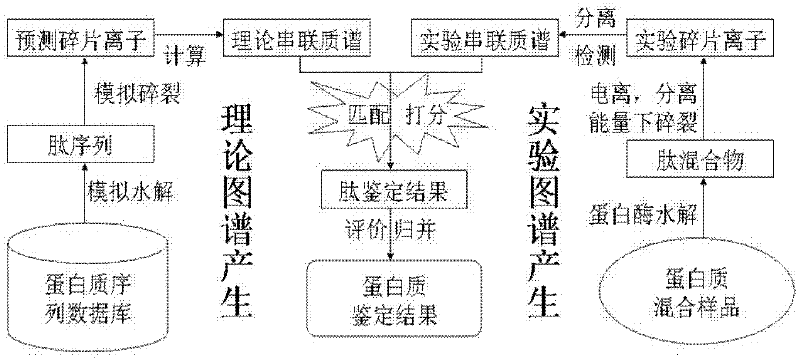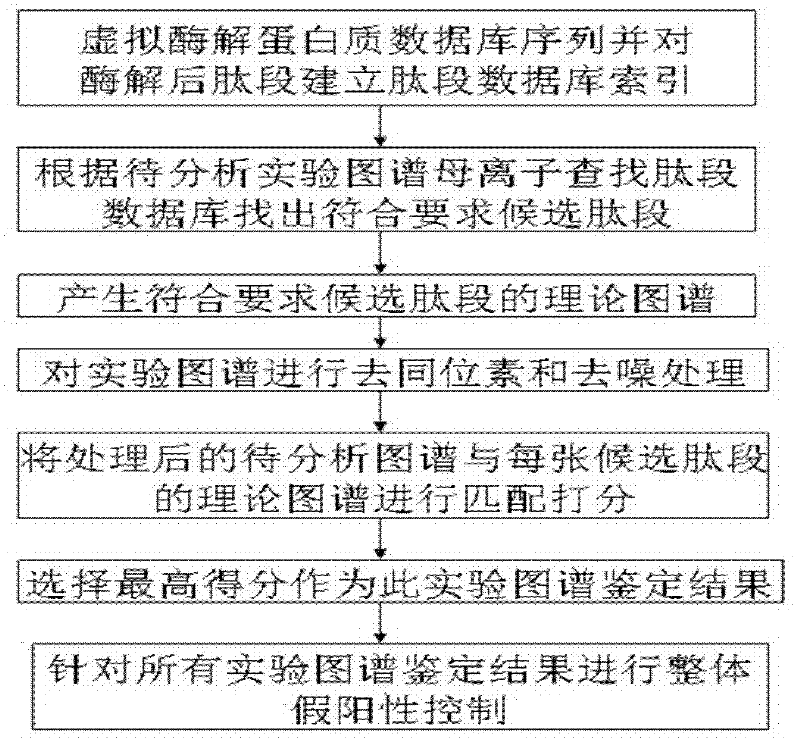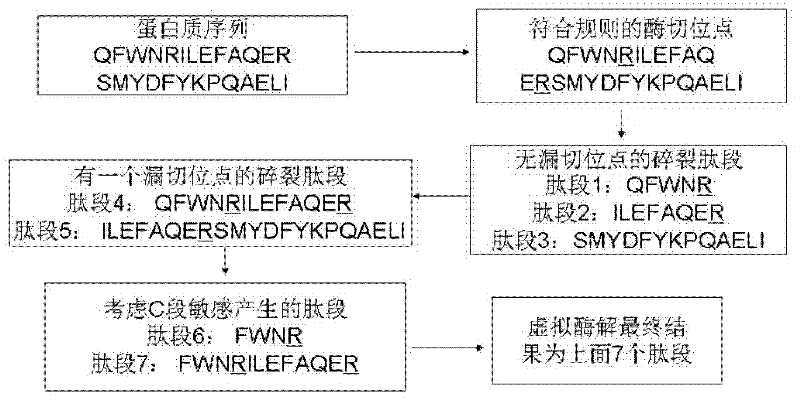Protein secondary mass spectrometric identification method based on probability statistic model
A probabilistic statistical model and secondary mass spectrometry technology, which is applied in the direction of measuring devices, material analysis through electromagnetic means, instruments, etc., can solve the problems of not fully reflecting the ion characteristics of experimental mass spectrometry
- Summary
- Abstract
- Description
- Claims
- Application Information
AI Technical Summary
Problems solved by technology
Method used
Image
Examples
Embodiment
[0098] Such as figure 1 As shown, a probabilistic statistical model-based protein secondary mass spectrometry identification method, comprising the following steps:
[0099] (1) Virtual enzymolysis protein database sequence, and establish peptide database and peptide database index for the peptide after enzymolysis according to the mass number of the peptide;
[0100] (2) According to the nucleoplasmic ratio of the parent ion in the experimental spectrum to be analyzed, find out the candidate peptides that meet the requirements in the peptide database described in step (1), and generate a theoretical spectrum that meets the requirements for all the candidate peptides found ;
[0101] (3) De-isotope and de-noising processing of the experimental spectrum to be analyzed;
[0102] (4) Match and score the experimental spectrum to be analyzed obtained in step (3) and the theoretical spectrum of each candidate peptide obtained in step (2), and select the candidate peptide with the ...
PUM
 Login to View More
Login to View More Abstract
Description
Claims
Application Information
 Login to View More
Login to View More - R&D
- Intellectual Property
- Life Sciences
- Materials
- Tech Scout
- Unparalleled Data Quality
- Higher Quality Content
- 60% Fewer Hallucinations
Browse by: Latest US Patents, China's latest patents, Technical Efficacy Thesaurus, Application Domain, Technology Topic, Popular Technical Reports.
© 2025 PatSnap. All rights reserved.Legal|Privacy policy|Modern Slavery Act Transparency Statement|Sitemap|About US| Contact US: help@patsnap.com



